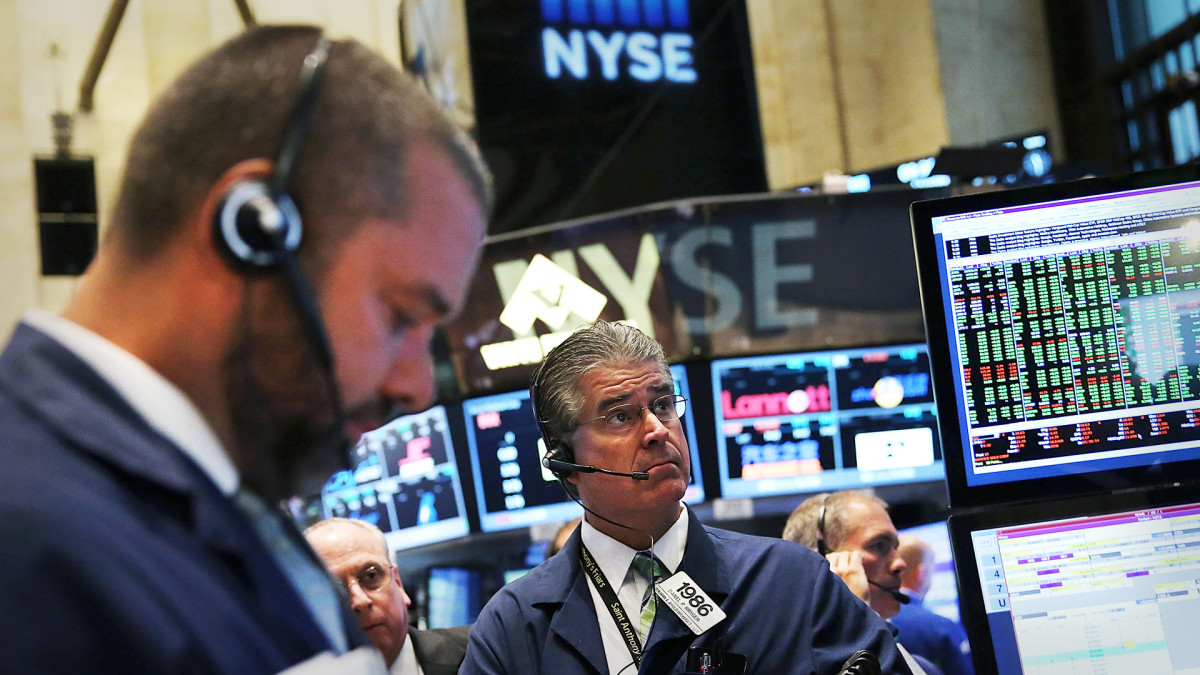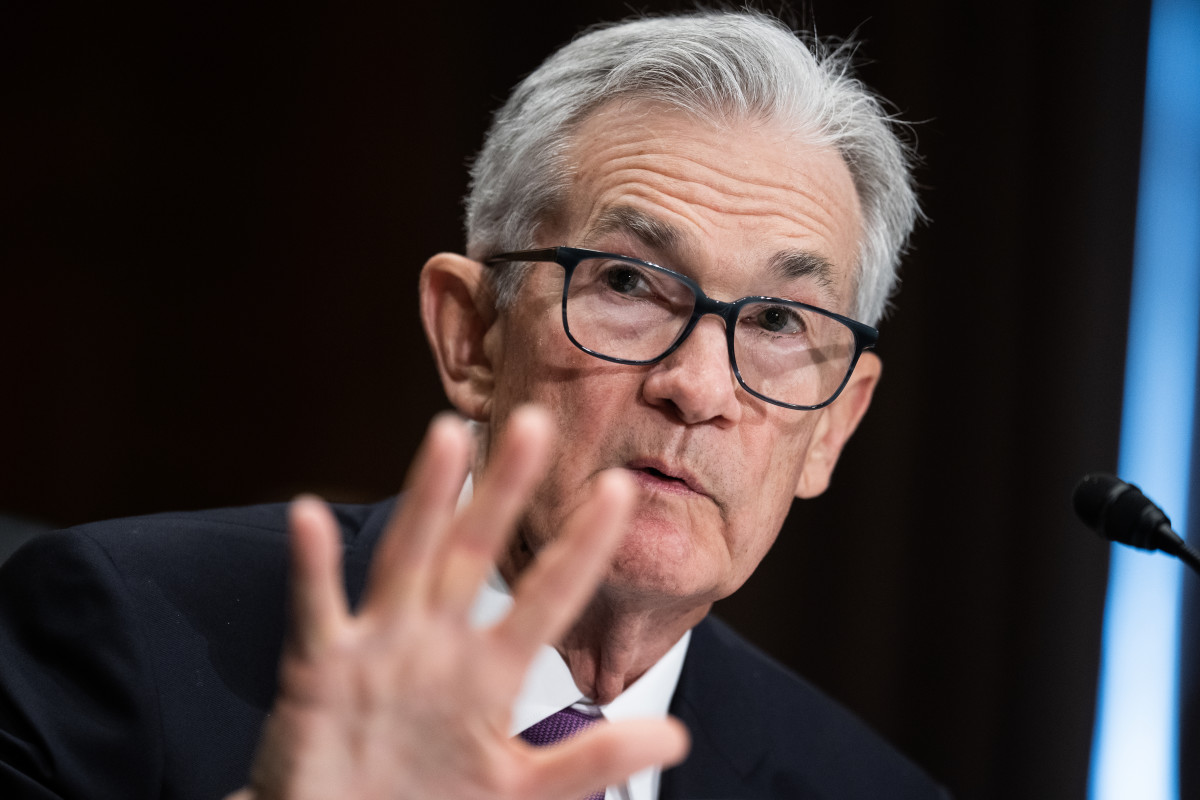
Stocks finished lower Wednesday for the third day in a row as some of the biggest tech names ended the session in the red.
The Dow Jones Industrial Average slipped 45 points or 0.12%, to 37,753, while the S&P 500 lost 0.58% to 5,022.21 and the tech-heavy Nasdaq fell 1.15% to 15,683.37.
Adam Turnquist, chief technical strategist for LPL Financial, said that the S&P 500 is experiencing its first real bout of volatility this year.
"The April showers — bringing a 3.9% decline thus far — have started to create some technical damage,” he said. “The index recently violated its shorter-term uptrend and its 20- and 50-day moving average (dma), leaving the 5,000-point milestone as the next major area of downside support.”
Turnquist said that while shorter-term breadth appears oversold, as nearly half of the index registered new 4-week lows this week, longer-term breadth metrics have held up well.
“Nearly 70% of S&P 500 constituents remain above their 200-dma,” he said. “Moreover, cyclical/offensive sectors are leading the way, with financials, energy, industrials, technology, and materials reporting the highest breadth readings."
"The lack of major damage to longer-term breadth across the offensive sectors suggests bullish leadership is still on stable ground despite the recent shakeout,” Turnquist added.
Updated at 12:19 PM EDT
Stocks slipping
A back-up in Treasury bond yields isn't helping stocks heading into the afternoon session, with the S&P 500 down 24 points, or 0.45%, and the Nasdaq off 130 points, or 0.82%.
Benchmark 10-year note yields have eased to 4.608%, with 2-yearn notes dipping below 4.94%, despite the ongoing re-set of Federal Reserve rate cut forecasts.
Fed - the 800 lb gorilla that is now lighter but still a force to reckon work. https://t.co/VO1i962y4Y
— Diane Swonk (@DianeSwonk) April 16, 2024
Updated at 9:34 AM EDT
Big green Big Board
The S&P 500 opened 23 points, 0.46% higher in the opening minutes of trading, with the Dow up 120 points and the Nasdaq rising 71 points, or 0.47%.
S&P 500 Opening Bell Heatmap (April 17, 2024)$SPY +0.47% 🟩$QQQ +0.39% 🟩$DJI +0.35% 🟩$IWM +0.55% 🟩 pic.twitter.com/ehySAVb8XA
— Wall St Engine (@wallstengine) April 17, 2024
Updated at 9:04 AM EDT
Boeing the whistle
Boeing (BA) shares extended their recent decline in early trading, pulling the stock to the lowest levels in nearly 18 months, ahead of testimony from an employee to a Senate subcommittee on aircraft safety later today.
Whistleblower Sam Salehpour, one of Boeing's quality engineers, has accused the planemaker of taking safety 'shortcuts' in its 787 Dreamliner and 777 widebody programs. Boeing has countered by say its checks include "exhaustive testing and analysis".
Boeing shares were marked 0.7% lower in pre-market trading to indicate an opening bell price of $169.35 each,
Boeing, $BA, engineer and whistleblower Sam Salehpour has said that he thinks all 787 jets should be grounded to allow for proper safety checks of the plane
— unusual_whales (@unusual_whales) April 17, 2024
Stock Market Today
Tensions in the region, which accelerated sharply following Iran's unprecedented attack on Israeli soil late Saturday, have yet to fully work their way into global markets, with oil prices falling for the past three sessions and stocks largely tracking both Federal Reserve interest rate forecasts and the start to the first quarter earnings season.
Fed Chairman Jerome Powell's remarks to an economic forum in Washington yesterday triggered a larger reaction in both the bond and currency markets as he suggested that recent inflation data "indicate that it's likely to take longer than expected" before the central bank can confidently begin easing rates.

"Right now, given the strength of the labor market and progress on inflation so far, it's appropriate to allow restrictive policy further time to work and let the data and the evolving outlook guide us," Powell said.
"If higher inflation does persist, we can maintain the current level of restriction for as long as needed," he added.
Rate traders have pared bets on Fed rate cuts in both June and July, and now suggest the first of likely two reductions this year will take place only in September.
That's added upward pressure to Treasury bond yields, taking benchmark 10-year notes closer to the 4.7% mark — a level seen only twice since the global financial crisis — and nudged 2-year notes past the 5% mark in late Tuesday trading.
Benchmark 10-year notes were marked modestly lower at 4.639% in overnight dealing, with 2-year notes at 4.956% heading into the start of the New York trading session.
The U.S. dollar index, which tracks the greenback against a basket of six global currencies, was marked 0.11% lower at 106.135.
Oil prices were also in the red, with Brent crude contracts for June delivery down 74 cents to $89.26 per barrel as traders unwind bets on supply disruptions tied to the prospect of a broader military conflict and eyed Energy Department data on domestic stockpiles and overall exports due out later in the session.
More Economic Analysis:
- Watch out for 8% mortgage rates
- Hot inflation report batters stocks; here's what happens next
- Inflation report will disappoint markets (and the Fed)
On Wall Street, stocks are set for modest early gains, with the S&P 500 priced for a 16 point opening bell advance and the Dow Jones Industrial Average indicated a 100 point bump. The Nasdaq is called 45 points higher.
In overseas markets, Europe's Stoxx 600 was marked 0.65% higher in early Frankfurt trading, with Britain's FTSE 100 up 0.56% in London.
Overnight in Asia, Japan's Nikkei 225 ended 1.32% lower in Tokyo, dipping below the 38,000 mark for the first time since February, while the regionwide MSCI ex-Japan benchmark rose 0.3% into the close of trading.
Related: Veteran fund manager picks favorite stocks for 2024







